Boulton & Paul Aircraft
Boulton Paul Aircraft Ltd was a British aircraft manufacturer that was incorporated in 1934, although its origins in aircraft manufacturing began earlier in 1914, and lasted until 1961. The company mainly built and modified aircraft under contract to other manufacturers, but had a few notable designs of its own, such as the Defiant fighter and the Balliol trainer.
The company’s origins date back to an ironmonger’s shop founded in 1797 in Norwich. By the early 1900s, Boulton & Paul Ltd was a successful general manufacturing firm. The aircraft building business was sold off from the main construction business in 1934 and then moved to Wolverhampton under its new name Boulton Paul Aircraft Ltd.
Boulton Paul started its construction engineering division in 1905.
In 1915, Boulton Paul began to construct aircraft under contract, including 550 of the Royal Aircraft Factory FE.2b. During the war the company built more Sopwith Camels than any other manufacturer. Success as an aircraft builder led the company to form a design department but none of its resulting aircraft made a significant impact while the war lasted. Boulton Paul’s chief aircraft designer was John Dudley North (1893–1968), who joined the company from Austin Motor Company Aircraft Department.
After World War I, Boulton Paul made their mark with the introduction of powered and enclosed defensive machine gun turrets for bombers. Their Sidestrand twin-engined biplane bomber, which could fly at 140 mph, had an exposed nose turret which was clearly inadequate. The subsequent Overstrand bomber featured the world’s first enclosed, power-operated turret, mounting a single Lewis gun and propelled by compressed air. The company licensed a French design of an electro-hydraulic four-gun turret which became a major feature of their future production. In addition to fitting turrets to bombers, Boulton Paul was to install them in fighters.
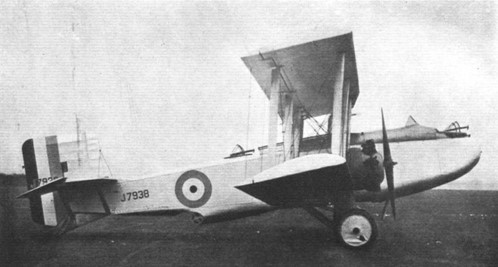
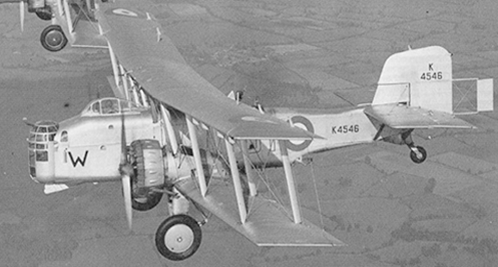
During this period Boulton Paul continued to operate outside the aircraft industry as well. They manufactured equipment such as machine tools and stationary engines. The latter were also available coupled to a dynamo for powering electric lighting circuits, and were sold under the Electolite brand name.
In 1934, Boulton Paul sold their “Aircraft Department” which became Boulton Paul Aircraft Ltd. Over the next couple of years a new factory site was built up in Wolverhampton. This gave access to a large skilled workforce on top of the 600 or so employees that left Norwich for Wolverhampton. Even so, Boulton Paul would later set up a training centre in Scotland to bring in extra workers. The first “turret” fighter to be built was the Hawker Demon. This was followed by Boulton Paul’s most famous aircraft, the Defiant, which was a revolutionary but flawed concept specified by the Air Ministry – a “fast” fighter with no fixed forward armament but a powerful four-gun dorsal turret.
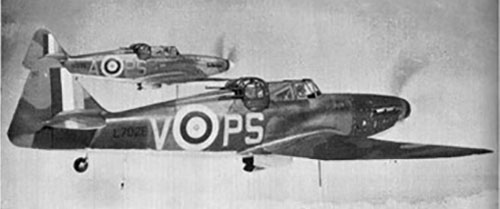
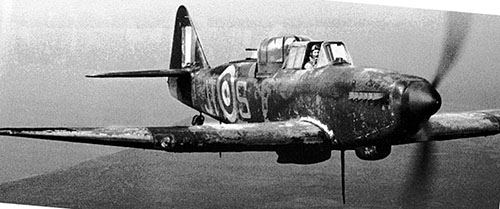
The Boulton Paul Defiant is a British interceptor aircraft that served with the Royal Air Force (RAF) during World War II. The Defiant was designed and built by Boulton Paul Aircraft as a “turret fighter”, without any fixed forward-firing guns, also found in the Blackburn Roc of the Royal Navy.
In combat, the Defiant was found to be effective at destroying bombers, the role it was designed for, but was vulnerable to the Luftwaffe’s more manoeuvrable, single-seat Messerschmitt Bf 109 fighters. The Defiant had been designed to destroy unescorted bombers by means of beam or ventral attacks and therefore lacked forward-firing armament, that proved to be a great weakness in daylight combat with fighters. It did, however, find success when it was converted to a night fighter. It eventually equipped thirteen squadrons in this role, compared to just two squadrons as a day-fighter, though this was mainly due to slow initial production. In mid-1942 it was replaced by better performing night-fighters, the Bristol Beaufighter and de Havilland Mosquito.
The Defiant continued to find use in gunnery training, target towing, electronic countermeasures and air-sea rescue.
Among RAF pilots it had the nickname “Daffy”.
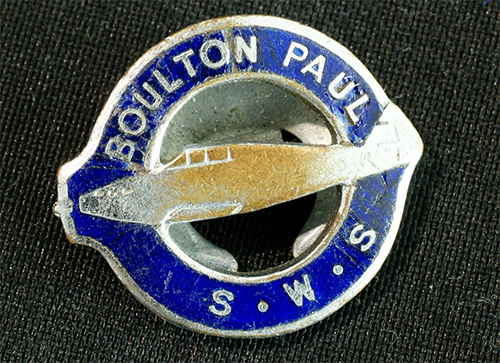
Turret fighters were expected to be able to engage enemy bombers from any aspect. The same concept was used for the Defiant’s naval equivalent, the Blackburn Roc, which while a design by Blackburn, the detail design was done in BP’s drawing office and the aircraft was built wholly by Boulton Paul.
Boulton Paul also built the Fairey Barracuda and did conversions of the Vickers Wellington. The only post-war design was the Balliol advanced trainer, of which 229 were built, including 30 as the Sea Balliol deck-landing trainer.
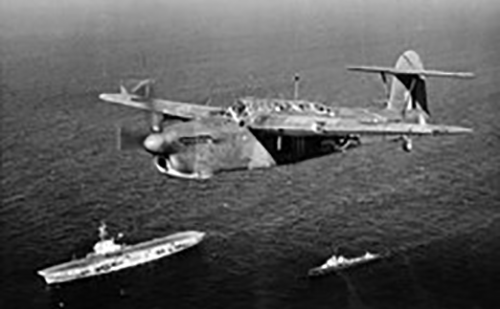

In the jet age, Boulton Paul worked on the English Electric Canberra and de Havilland Vampire. It designed and built a couple of delta-wing jet-engined aircraft for research work and continued to tender designs for official requirements. In 1961 the company was acquired by Dowty Group and was renamed Dowty Boulton Paul Ltd and then Dowty Aerospace.

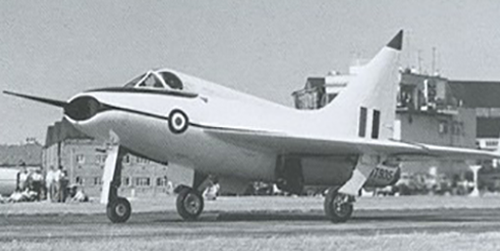
Boulton Paul P111 Experimental Aircraft
The development of the P.111 came as a response to the release of Specification E.27/46 by the shortly after the conclusion of the Second World War. To internally accommodate its Rolls-Royce Nene turbojet propulsion, a relatively broad fuselage was necessitated, giving it an unorthodox appearance. The wing featured removable wing tips that could be swapped to produce different wing shapes, a feature deemed to be highly desirable for the aerodynamic investigations it was built to perform. Other novel features beyond the wing included a Martin-Baker-built ejection seat and an early fully-powered flight control system. The P.111 performed its maiden flight on 10 October 1950.
Early flight testing of the aircraft revealed the flight controls to be highly sensitive, major trim shifts would also occur whenever the landing gear was deployed or retracted, and a relatively high landing speed was also necessary. Various modifications, including the addition of fuselage-mounted airbrakes, a rudimentary feedback arrangement for the flight controls, and redesigned undercarriage doors, were made during the flight test programme, the majority of these changes occurred following a minor landing accident. These modifications were so extensive that the aircraft was re-designated as the P.111A. Its final test flight occurred during 1958, after which the aircraft itself was transported to the Cranfield College of Aeronautics for use as a training airframe. The type should not be confused with the later Boulton Paul P.120, albeit the two aircraft do share considerable similarities.
Following the acquisition of Dowty Aerospace by TI Group in 1992, and the subsequent merger of Smiths Industries and the TI group in 2000, to form Smiths Group, the Wolverhampton factory site was sold again in May 2007 to GE Aviation Systems. Yet again in August 2009 the factory was sold to Moog Inc. but was to move to new premises at the nearby I54 business park. The factory also had an on-site Boulton Paul Museum dedicated to Boulton Paul aircraft and the traditional methods used to manufacture aircraft. The important collection was scheduled to move to RAF Cosford in Spring 2013.
Boulton Paul aircraft (including pre 1934 aircraft)
First flight date shown
• Boulton Paul Bobolink 1918
• Boulton Paul Bourges 1918
• Boulton Paul P-6 1918
• Boulton Paul Atlantic 1919
• Boulton Paul P.9 1919
• Boulton Paul P.10 1919
• Boulton Paul Bolton 1922
• Boulton & Paul Bugle 1923
• Boulton Paul Bodmin 1924
• Boulton Paul Sidestrand 1926 – bomber
• Boulton Paul Bittern 1927 – night fighter with upward firing guns
• Boulton Paul Partridge 1928 – fighter
• Boulton Paul Phoenix 1929 – low cost aeroplane for personal use
• Boulton Paul P.32 1931 – bomber, not accepted for service
• Boulton Paul Overstrand 1933 – bomber
• Boulton Paul P.64 Mail-Carrier 1933
• Boulton Paul P.71A 1934 – transport derivative of the Mailplane
• Boulton Paul Defiant 1937 – turret fighter
• Boulton Paul P.92 1941 – fighter/ground attack
• Boulton Paul Balliol 1947 – trainer
• Boulton Paul P.111 1950 – delta wing research
• Boulton Paul P.112 1950s – proposed three seat training aircraft, not built
• Boulton Paul P.116 1950s – proposed two seat training aircraft, not built
• Boulton Paul P.120 1952 – delta wing research
• Boulton Paul P.130 proposed VTOL aircraft
• Boulton Paul P.134 proposed VTOL aircraft
• Boulton Paul P.135 proposed VTOL aircraft
• Boulton Paul P.136 proposed VTOL aircraft
• Boulton Paul P.137 VTOL research aircraft
• Boulton Paul P.140 proposed VTOL airliner
• Boulton Paul P.141 proposed VTOL airliner
• Boulton Paul P.142 VTOL research aircraft
• Boulton Paul P.143 proposed VTOL airliner
• Boulton Paul P.145 proposed VTOL twin-boom aircraft
Missiles
• UB.109T – Company designation Boulton-Paul P.123 .

